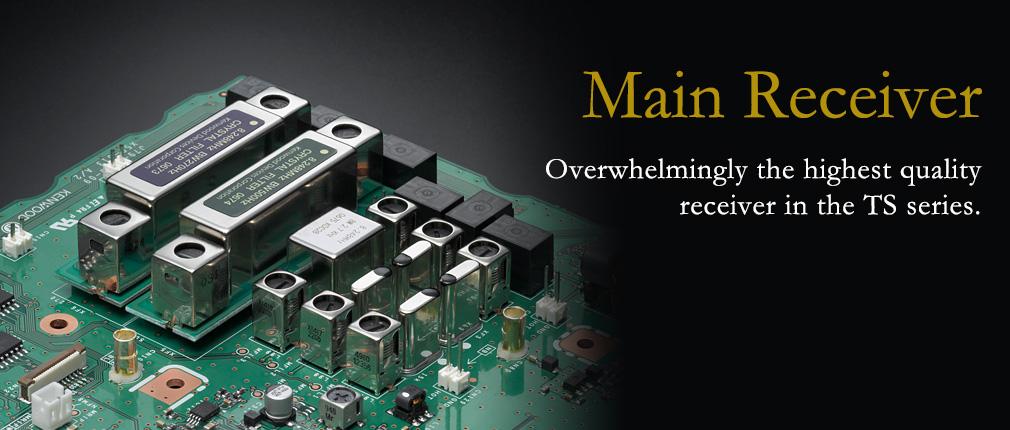
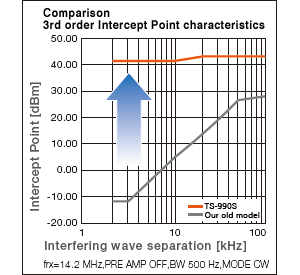
A key point in tapping maximum performance from the 1st mixer in actual operation (say, CW operation) is to prevent the outflow of unnecessary signals, other than the target signal, from the mixer to the subsequent stage. This is because it can tap the maximum performance of the digital IF filter using the DSP in the final IF stage. The TS-990S main receiver employs a 1st IF frequency 8.248 MHz down-conversion format. It achieves superior close-in dynamic range unattainable through conventional up-conversion formats. Even if the interference is a close-in frequency, the receiver maintains a relatively flat dynamic range, which you can tune without losing your target signal.
The horizontal axis shows separation of the target signal by interfering signal frequencies (two waves). At a frequency of 10 kHz, interference 1 refers to reception frequency + 10 kHz, and interference 2 refers to reception frequency + 20 kHz.
In place of the Double Balanced Mixer, which uses the J-FET, we have installed the newly adopted Double Balanced Grounded Switch Type (H-mode mixer) in the 1st mixer circuit, which is the heart of the main receiver. The transceiver is also equipped with a pre selector function (works on HF amateur band) that varies its tuning frequency in tandem with the receiver frequency. It effectively dampens interference from strong signals that cannot be minimized through bandpass filters on dedicated amateur bands. Furthermore, we have achieved a +40 dBm class of third-order intercept point for the signal path of the 1st mixer, based on select circuits and components, employing large core toroidal coils for protecting against distortion from large input signals, as well as using relays for the signal switching.
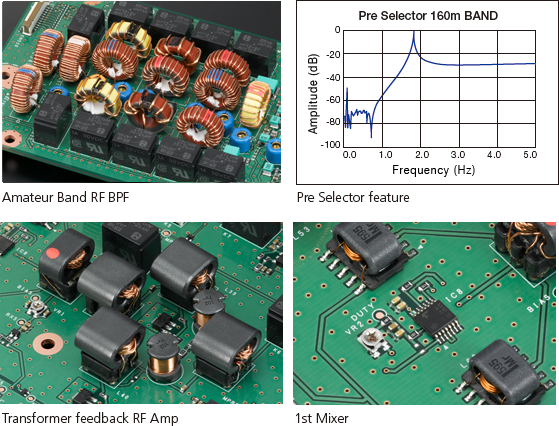
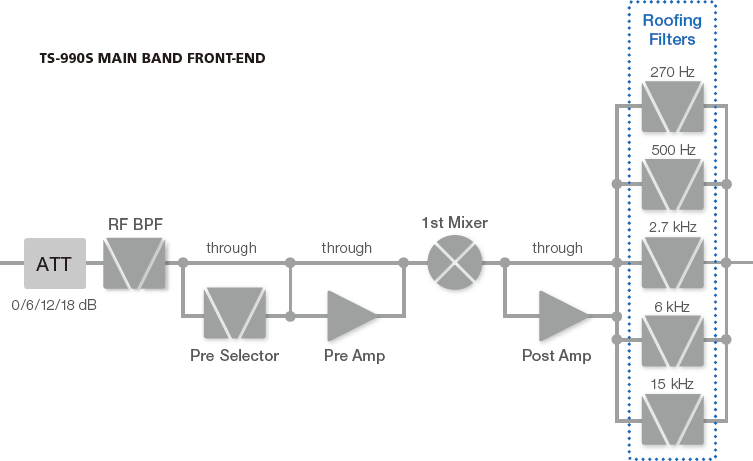
The transceiver uses the down-conversion method on all amateur bands, and features five types of High-IP roofing filter. Narrow bandpass widths selectable are 500 Hz and 270 Hz for CW operation,2.7 kHz for SSB and 6 kHz and 15 kHz, which are suitable for AM/FM. These filters are automatically selected in tandem with DSP-based settings. Of course, manual switching is possible as well.

The TS-990S Local Oscillator Circuit is an independent configuration that combines the main receiver and VCO Frequency Division/DDS, the sub-receiver, DDS, transmitter and conventional PLL, with the targeted signal system. The newly developed VCO frequency division format is used for the 1st local oscillator of the main receiver. The device achieves favorable C/N characteristics that rival the DDS direct format, and relatively spurious-free local oscillation signals that are characteristic of the PLL format, by oscillating and dividing the VCO at higher frequencies than the intended frequency. It is possible to convert it to 1st IF in a pure state without leaking the target signal as noise by reducing static noise from the local oscillator and increasing the C/N ratio.
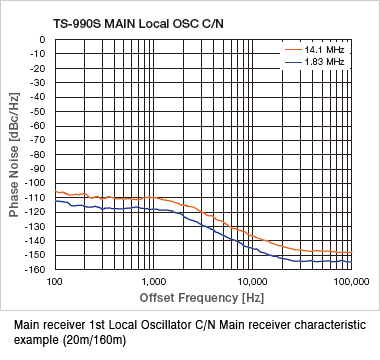

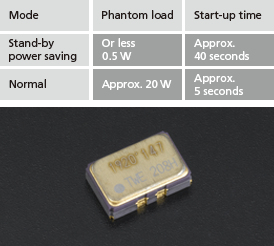
The standard equipment includes a TCXO (Temperature-Compensated Crystal Oscillator), which stabilizes frequencies at ±0.1 ppm as the standard signal source. Unlike OCXO (Oven Controlled Crystal Oscillator), which requires warm-up time, this device can start up quickly even from the power-off position, while maintaining a high level of stability. It is in compliance with European energy-saving standard Lot 6. Power consumption in stand-by energy-saving mode is less than 0.5 W. A BNC connector on the rear panel provides 10 MHz reference I/O.